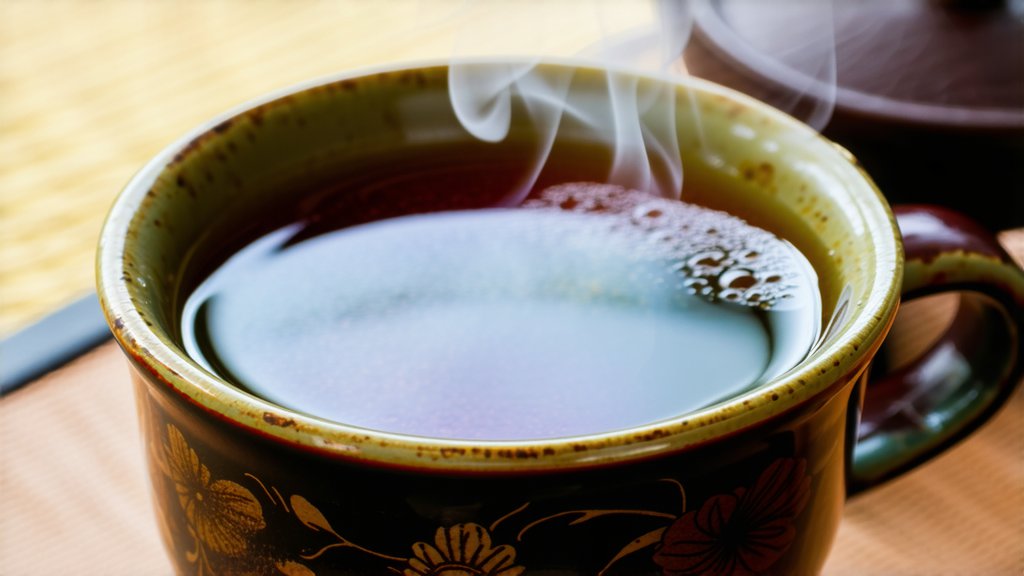
Lapsang Souchong, often referred to as the "smoky beauty" of the Chinese black tea world, is a unique and fascinating variety that has captured the hearts of tea enthusiasts globally. This particular tea, with its rich history, distinctive flavor profile, and intricate production process, offers a glimpse into the depth and diversity of Chinese tea culture. In this exploration, we will delve into the origins of Lapsang Souchong, its various types, the meticulous crafting process, the art of brewing, and the nuanced appreciation of its taste.
Origins and History
The story of Lapsang Souchong dates back to the Qing Dynasty in China, specifically to the Wuyi Mountains in Fujian Province. Legend has it that during a particularly harsh winter, tea farmers were forced to hastily dry their freshly picked leaves over open pinewood fires. Unexpectedly, this method imparted a unique smoky aroma and flavor to the tea, which was met with great enthusiasm by local consumers. Over time, this serendipitous discovery evolved into a deliberate and refined production technique, giving birth to what we now know as Lapsang Souchong.
The name itself, "Lapsang Souchong," translates to "small squid" in Chinese, a nod to the shape of the dried tea leaves which resemble the tiny sea creature. This whimsical naming adds an element of charm to the tea's already captivating narrative.
Varieties of Lapsang Souchong
There are several types of Lapsang Souchong, each varying slightly in processing methods and resulting flavors. The most renowned among them include:
-
Traditional Lapsang Souchong: The quintessential form, known for its intense smokiness and deep, complex flavor profile. It undergoes a longer smoking process, allowing the pinewood aroma to deeply penetrate the leaves.
-
Aroma Lapsang Souchong: As the name suggests, this variant emphasizes the fragrant aspect, with a lighter touch of smoke compared to the traditional version. It appeals to those who appreciate a more balanced combination of smokiness and the inherent sweetness of the tea.
-
Unsmoked Lapsang Souchong: For purists who desire the essence of Lapsang without the smokiness, this type is processed similarly to other black teas but omits the smoking step. It retains a subtle fruity and floral note while maintaining a robust body.
The Art of Production
The production of Lapsang Souchong is an artful dance between tradition and precision. Here’s a simplified overview of its creation:
-
Withering: Freshly plucked tea leaves are spread out to wilt under the sun or in a well-ventilated room, reducing their moisture content and preparing them for rolling.
-
Rolling: The wilted leaves are then gently rolled to break down cell walls, facilitating oxidation and releasing essential oils that contribute to the tea's flavor.
-
Oxidation: Unlike other black teas that are typically oxidized in a controlled environment, Lapsang Souchong undergoes a unique twist – it is partially oxidized before being spread out for smoking.
-
Smoking: This is where Lapsang Souchong truly shines. The semi-oxidized leaves are placed over bamboo trays and smoked using pinewood fires. The duration and intensity of smoking can vary depending on the desired level of smokiness. This step imparts the signature smoky aroma and flavor that defines Lapsang Souchong.
-
Drying: Finally, the smoked leaves are further dried to remove any remaining moisture, ensuring longevity and stability in storage.
Brewing the Perfect Cup
To fully appreciate the allure of Lapsang Souchong, proper brewing techniques are essential. Here’s how to coax out its best flavors:
-
Water Temperature: Use freshly boiled water, around 200°F (93°C), to ensure optimal extraction of flavors without scalding the delicate leaves.
-
Tea Quantity: For a standard 8-ounce cup, use approximately 3-4 grams (about 1 teaspoon) of loose leaf tea. Adjust according to personal preference.
-
Steeping Time: Allow the tea to steep for 3-5 minutes. Shorter steeping times bring out the smokiness more prominently, while longer times accentuate the sweetness and complexity.
-
Multiple Infusions: One of the joys of Lapsang Souchong is its ability to yield multiple infusions, each revealing different facets of its character. Subsequent brews may require slightly longer steeping times to extract full flavor.
Tasting Notes and Appreciation
Tasting Lapsang Souchong is an experience that engages all the senses. Here's what to look for when appreciating this exquisite tea:
-
Appearance: Dry leaves are typically dark and twisted, with a visible sheen from the smoking process. The brewed tea exhibits a reddish-brown hue, indicative of its black tea classification.
-
Aroma: The scent is unmistakably smoky, reminiscent of a campfire or a wood-burning stove, intertwined with subtle hints of pine resin and a faint sweetness.
-
Flavor: On the palate, Lapsang Souchong offers a complex medley of tastes. Initial sips reveal a bold smokiness that gradually gives way to a rich, malty sweetness. Depending on the variety, you might also detect notes of dried fruit, caramel, or even a whisper of spice. The finish is long-lasting and satisfyingly smooth.
-
Mouthfeel: The texture is full-bodied yet silky, coating the mouth with a pleasant warmth that lingers after each sip.
Appreciating Lapsang Souchong goes beyond mere consumption; it's about immersing oneself in a centuries-old tradition and savoring the harmony between man, nature, and craftsmanship. Each cup tells a story of resilience, innovation, and the timeless pursuit of flavor perfection.
In conclusion, Lapsang Souchong stands as a testament to the extraordinary diversity within Chinese black teas. Its journey from a humble accidental discovery to a celebrated global beverage encapsulates the essence of Chinese tea culture – a blend of history, artistry, and an unwavering commitment to quality. Whether you're a seasoned tea connoisseur or a curious newcomer, exploring Lapsang Souchong promises a sensory adventure like no other, inviting you to indulge in the smoky embrace of this remarkable tea.